|
|
Post by cff on Jun 7, 2008 22:17:08 GMT -5
I start off by making wax cell cups, I soak this homemade cell maker in soapy water over night and dip the ends of the dowel rods into hot wax several times. 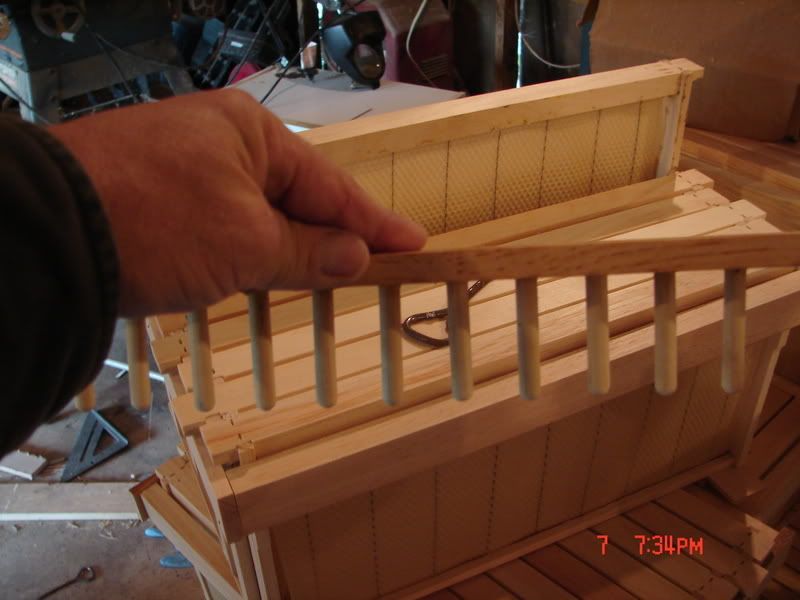 When the wax cools I remove the wax cell cups. 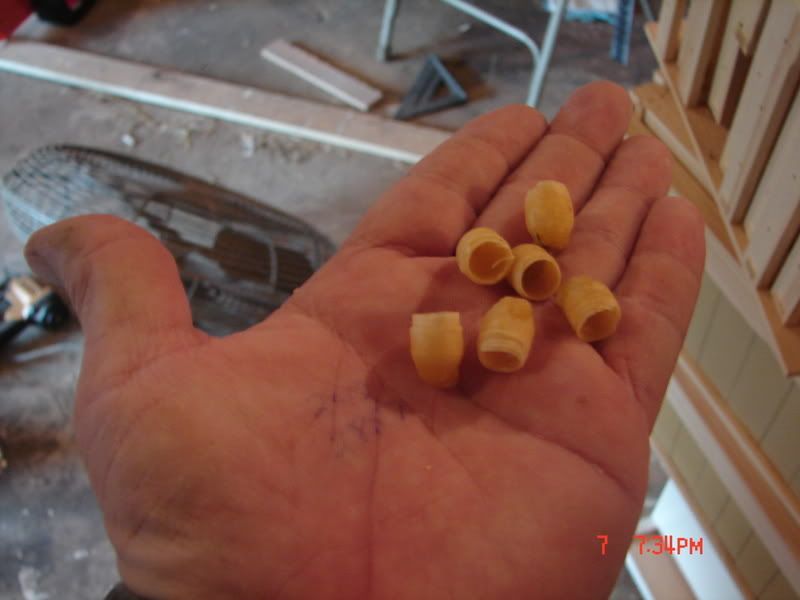 I lay out a set of frame bars and apply a thin layer of hot wax to the wood with a spoon; before the wax completely cools I position a cell cup on the bar. (sorry no pic) After I've finished making the cell bars I take a frame of brood from the breeder hive with the proper age larva (4 days old) 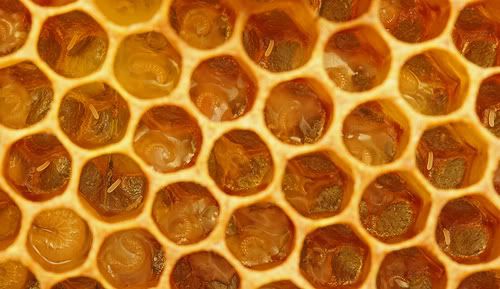 The proper age larva are the smallest ones in the pic above, these are eggs that haven't hatched yet. 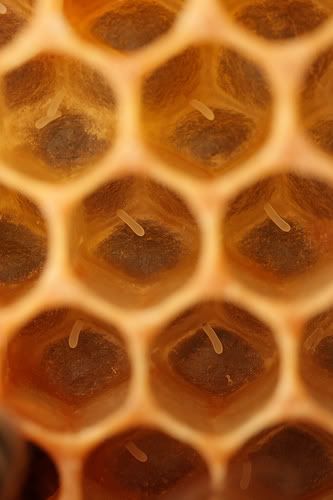 I use a grafting tool to lift a single larva from the brood frame and place it into a wax cup on my cell bar 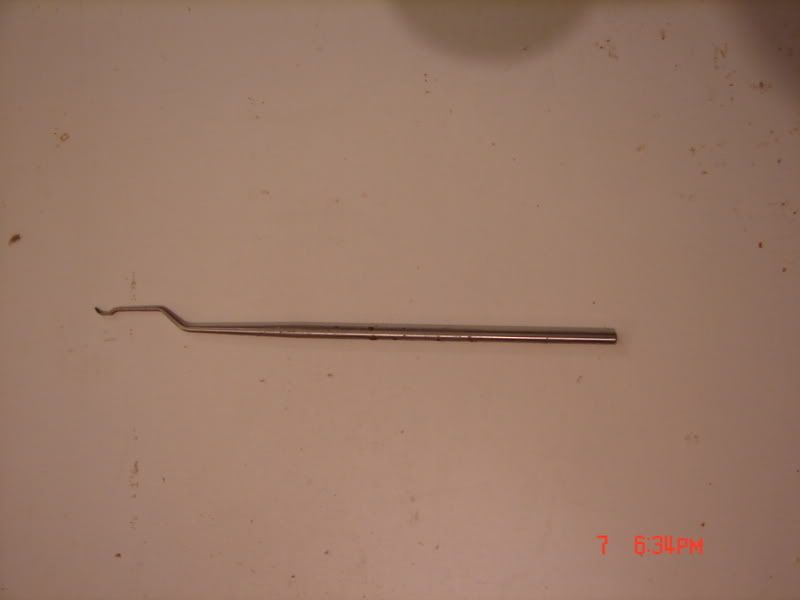 After I've filled all the cells I place the cell bar frame into a queen-less hive that we call a cell builder. 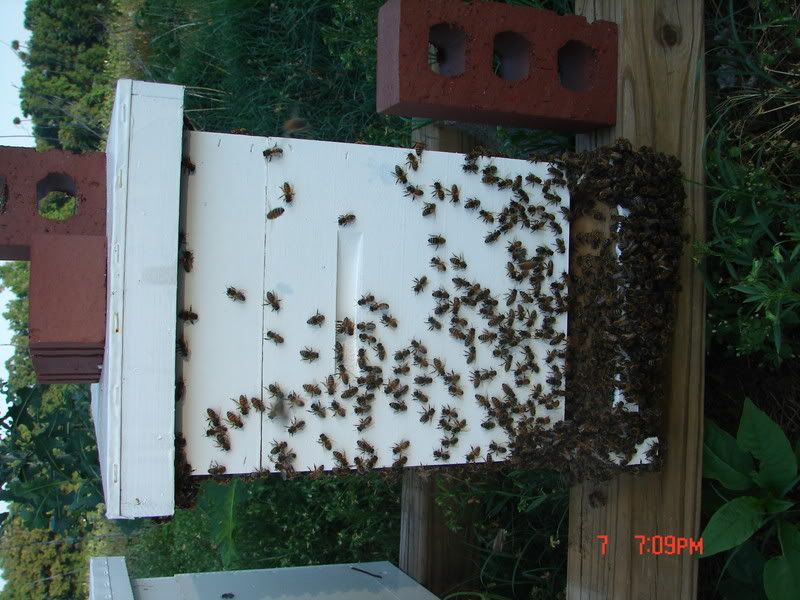 10 Days later I take the cell bar out of the hive, by now I should have a frame with capped queen cells. 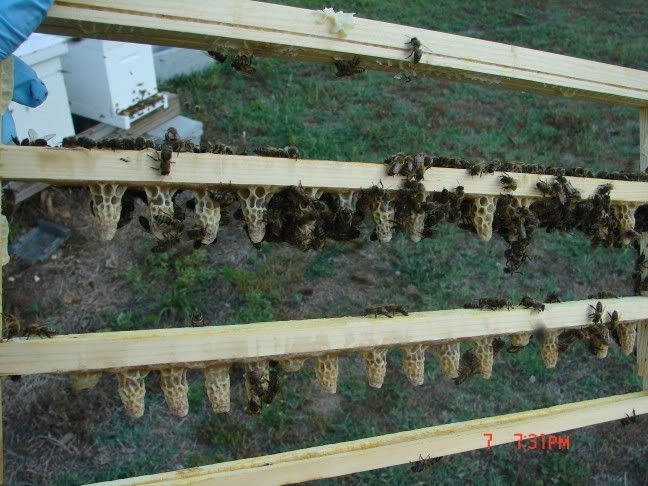 I use my hive tool to gently remove the queen cells from the cell bar by cutting the wax base lose from the wood bar. 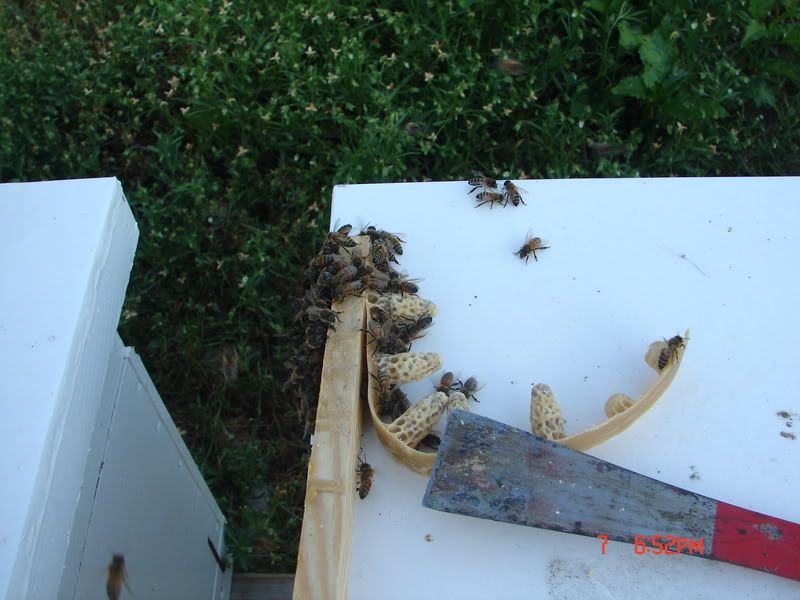 After I have the cells off the bar I divide them up and place two in each have that I'm re-queening or new hive that I'm starting 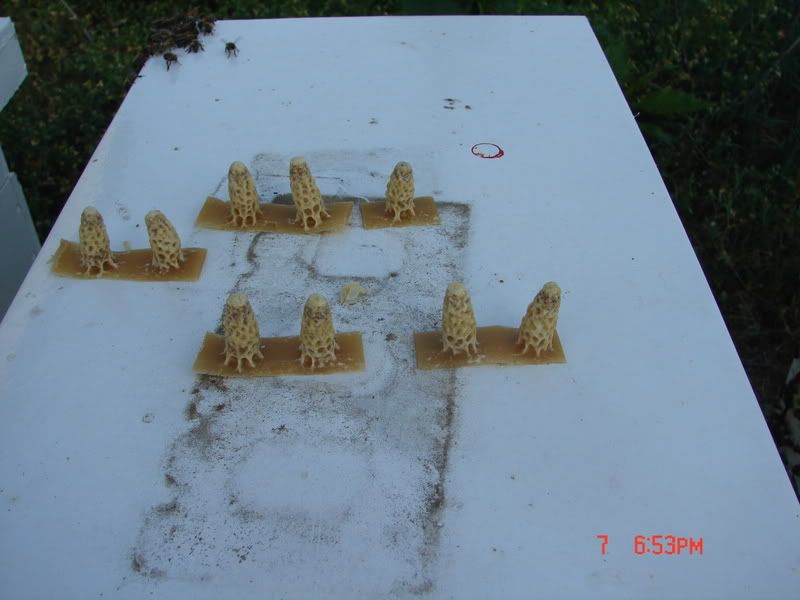 There are several steps to raising queens but there all pretty easy |
|
|
|
Post by cff on Jun 7, 2008 22:51:24 GMT -5
These cells should hatch in a few days; the virgin queens will mature for about five days before leaving the hive to mate and hopefully make it back to the hive to become new laying queens.
|
|
|
|
Post by Alan on Jun 27, 2008 0:07:55 GMT -5
Hey CFF, thank you so much for that, very informative and great pictures and something that I need to learn to do as well. I keep trying to get the guy I'm working in into doing queen grafting but I just can't get him interested, I have high hopes though of one day being able to do the things that you do with your bees and becoming self sustainable with it, please keep these posts coming, I know there are others here very interested in this, just short on time to post this time of the year.
Thanks again friend!
|
|
|
|
Post by durandal on Jun 27, 2008 23:46:46 GMT -5
Alan
Check your Indiana Bee or Extension Programs. Ohio State Beekeepers Association has a queen program going that is free to members and not that much for non. THere are six or seven and located around the State. I missed the local one this year and do not have the time to travel to the other ones, so I plan on hitting my next year.
Indiana might have something similar.
I did my first split using a queen cell from a hive that was swarming (caught the swarm and rehived...so now I am up to nine hives now!!). I checked in on them on Wednesday and the queen is active and laying which is simply awesome to see that work.
She's laying eggs nicely and in quantity. I have to transfer them from the nuc and super to a full 10 frame box and a super ASAP.
That is your other alternative. You can use the entire frame or simply cut the cells out and place them in a queenless nuc...or let the nuc make its own queen.
|
|
|
|
Post by Alan on Jul 5, 2008 21:19:41 GMT -5
Thanks for the information Rich, I will definetly look into those programs come Monday and see if Indiana has anything like that. I'm learning slowly, but learning, just wish I had more time to focus on the bees, I'm toying with the idea of multiple hives next year, the more the merrier (I hope).
|
|
|
|
Post by nikolamk on Jul 13, 2008 13:27:44 GMT -5
Hi cff.
Thank you for the pictures and article, they are great!!!
But can you tell me dimensions (diameter of each) of homemade wood cell maker.
Thank you,
Nikola, Macedonia
|
|
|
|
Post by cff on Jul 13, 2008 16:43:19 GMT -5
Hi Nikola"
I use 5/16 dowel rod from the local hardware store, after there cut to lenght I round the ends on a belt sander. Cheap and easy if you have a little time on your hands.
|
|